Four main types of seaweed used for making seaweed fertilizer
There is a category in the vast ocean that, although simple and ancient, has a wide variety of species and is widely distributed. They are lower spore plants - algae. Algae appeared 1 billion years ago and were the earliest forms of life on Earth. As primary producers, algae produce organic matter and release oxygen through photosynthesis, and provide energy to animals at all levels through the marine food chain, thereby maintaining the diversity of marine biological species and the stability of marine ecosystems. This article will focus on the efficacy and role of seaweed in agriculture, providing a reference for us to further understand how to use seaweed to improve crop growth and enhance agricultural production efficiency. Seaweed is an ideal raw material for producing green and efficient new fertilizers, but different types and growth environments of seaweed have different nutrient types and contents, resulting in functional differences in the seaweed extracts obtained. At present, most of the raw materials used by seaweed fertilizer production enterprises are brown algae. In addition to chlorophyll, brown algae cells also contain a large amount of yellow phycocyanin. Due to the coverage of chlorophyll by phycocyanin, brown algae appear brown.
The first type of seaweed Ascophyllum nodosum
Ascophyllum nodosum, is a type of cold water algae with strong vitality. It has a unique appearance, with organs such as roots, stems, and leaves, and nutrient bubbles in the middle. It mostly grows on rocks in intertidal zones or on the seabed. The weather here is constantly changing, with fluctuating tides and alternating stresses of low temperature, high salt, drought, and high temperature. The living environment is very complex and harsh. This has led to the evolution of powerful nutrient enrichment capabilities in seaweeds, absorbing a large amount of mineral nutrients such as calcium, iron, magnesium, phosphorus, potassium, and sulfur from seawater, as well as trace elements such as zinc, iodine, manganese, and copper. They also autonomously synthesize dozens of endogenous active substances such as seaweed polysaccharides, mannitol, betaine, phenols, cytokinins, cytokinins, and gibberellins, which are stored in nutrient vesicles to resist stress and maintain growth. Physcomitrella belongs to the genus Physcomitrella in the phylum Physcomitrella. The body of the algae is olive colored, and the leaves are wrinkled with a spherical shape at intervals. Mainly distributed along the Atlantic coast of the Americas and the northern coast of Ireland, it grows mostly on rocks in the intertidal zone or on the seabed. It has a strong ability to enrich and absorb nutrients in seawater, and metabolizes and synthesizes various bioactive substances such as seaweed polysaccharides, mannitol, phenols,
alginate, brown algae polyphenols, kelp polysaccharides, fucoidan, cytokinin, and gibberellin. There are more than 60 active substances in the extract of diatom, with a total content of up to 50% alginate and a much higher content of seaweed polysaccharides than other algae.

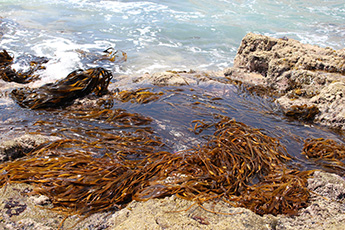
The second type of seaweed Durvillaea
Durvillaea, belongs to the brown algae phylum and is a rare blue noble food, belonging to the world's restricted mining resources. They prefer to grow in cold and nutrient rich sea areas, and their internal tissues are honeycomb shaped and filled with air, allowing them to naturally float. Antarctic bull algae have strong resilience and can withstand strong winds and waves. Antarctic cowhide algae is a nutritious and delicious green natural food among brown algae, and is a wild and natural deep-sea plant; It is the most precious and rare member of deep-sea plants. Due to the extremely harsh conditions for the growth of sea mushrooms, only in the unpolluted waters along the South China Sea coast of Chile can they grow in small quantities worldwide. Antarctic cowhide algae contains all nutrients higher than terrestrial plants, such as protein, vitamins, fiber, calcium, iodine, sodium, iron, potassium, phosphorus, zinc, and selenium trace elements. More than 20 nutrients unique to the ocean, including alginate, fucoidan, EPA (unsaturated fatty acids), SOD (superoxide dismutase), and abundant collagen.
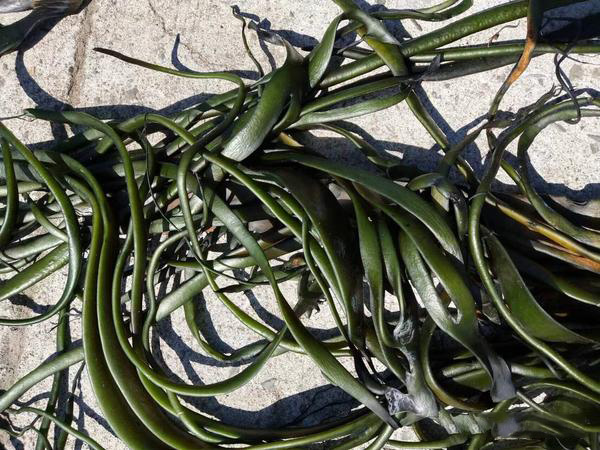
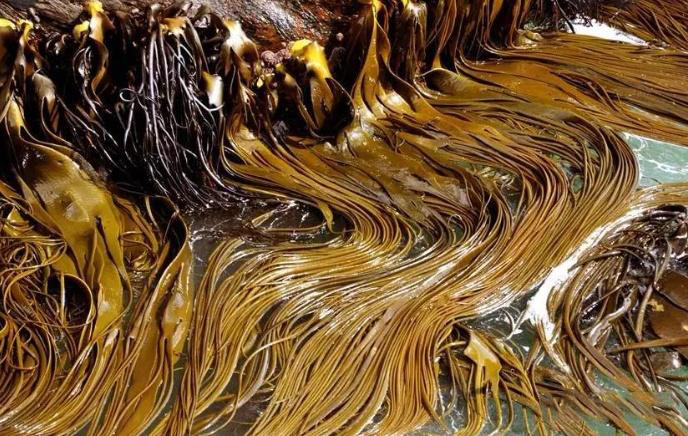
Type III Sargassum
Sargassum grows in rocky marshes in low tide zones or on rocks at depths of 2-3 meters in the subtidal zone. There are 250 species, most of which are warm water species, widely distributed in warm and temperate waters, especially in the Indo Western Pacific and Australia. The sea area where Sargassum grows has high salt content, high transparency, relatively fertile water quality, and sufficient nutrient supply.
Sargassum has strong vitality and reproductive ability, with a fast growth rate, multiple branches and spores, high content of cytokinins, and contains various active substances such as seaweed polysaccharides, seaweed hormones, and antibiotics; Sargassum has a strong ability to absorb nutrients, accumulating abundant minerals (such as potassium, calcium, iron, zinc, and iodine) and multiple vitamins (with the highest content of B vitamins). It has a complete range of amino acids and balanced content ratios, making it a high-quality raw material for extracting alginate, mannitol, and producing seaweed fertilizer.
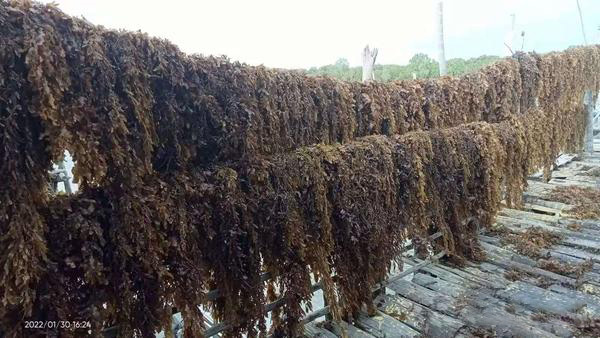

Sargassum polysaccharides are produced through a biological enzymatic hydrolysis process, which degrades the macromolecules of seaweed in Sargassum into small molecules that are easily absorbed and utilized by plants. Applied in agricultural production, it can promote rapid growth and differentiation of crops, promote thick roots and stems, lush branches and leaves, enhance photosynthesis, and improve crop stress resistance and immunity, better resisting diseases, pests, drought, etc.
The fourth type of seaweed kelp
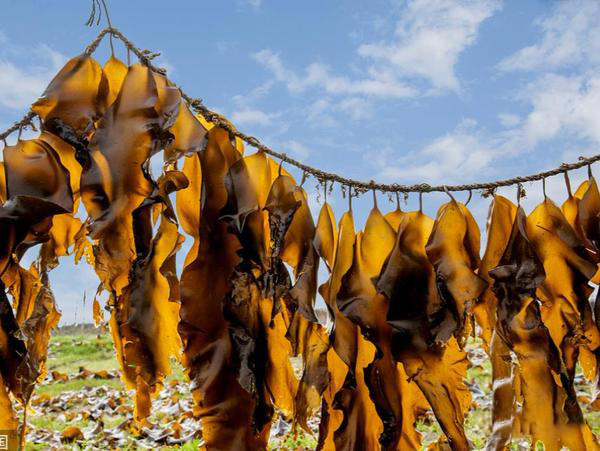
Kelp belongs to the kelp family of the brown algae phylum. The algal body is brown, elongated, leathery, generally 2-6 meters long and 20-30 centimeters wide. The algal body is clearly divided into fixatives, stems, and leaf like bodies. The leaves are composed of epidermis, cortex, and pulp tissues, and there are sporangia at the lower part of the leaves. It has a mucous cavity and can secrete slippery substances. Fixed tree like branches are used to attach seabed rocks and grow well in areas with low water temperature and high flow velocity. Conversely, they grow slowly and are prone to diseases. The distribution range of natural growth is mainly in the coastal areas of the North Pacific and Atlantic, limited to the Liaodong Peninsula and Shandong Peninsula in China. Artificial breeding has been promoted along the coasts of Zhejiang, Fujian, Guangdong and other places.
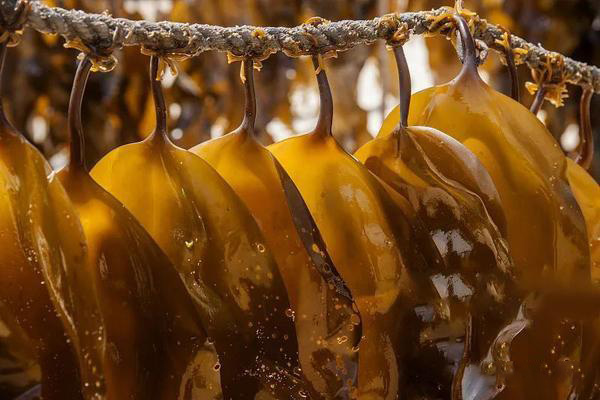
Kelp has a complete nutritional structure and a variety of active substances, especially seaweed polysaccharides, which are rich in various nutrients and chemical components with appropriate proportions. Extracting seaweed for agricultural production has achieved unexpected results.



 Mobile: 86-13012553585 15610518510
Mobile: 86-13012553585 15610518510 Phone (Fax):86-53283197178
Phone (Fax):86-53283197178 E-mail: admin@bluealga.com
E-mail: admin@bluealga.com Add:No.918 Lingang 8 Road Huangdao District,Qingdao China 266400
Add:No.918 Lingang 8 Road Huangdao District,Qingdao China 266400

